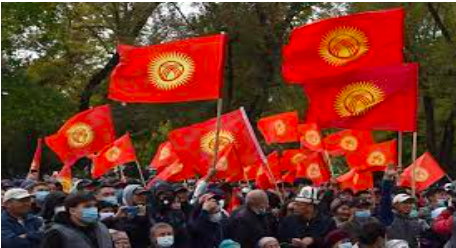Armenia-old and new
Posted on : November 18, 2019Author : AGA Admin

Armenia, a country of Transcaucasia, lies just south of the great mountain range of the Caucasus and to the northwestern extremity of Asia. To the north and east Armenia is bounded by Georgia and Azerbaijan, while its neighbours to the southeast and west are, respectively, Iran and Turkey. Naxçıvan, an exclave of Azerbaijan, borders Armenia to the southwest. The capital is Yerevan (Erevan). Modern Armenia however comprises only a small portion of ancient Armenia, one of the world’s oldest centres of civilization. The Armenian people entered the modern era with their historic lands of more than three millennia divided between two empires—the Ottoman and Persian empires. The Ottomans ruled the western and larger part, while the Persians ruled the eastern lands. Ottoman rule extended from the fourteenth century to the establishment of the Republic of Turkey in 1923. The latter inherited the historic Armenian lands as a successor state to the Ottoman Empire. The Persian Empire ruled Armenian lands in the east until the signing of the Treaty of Turkmenchai in 1828, which, in the aftermath of the Russo-Persian wars, fulfilled Russian imperial expansionist objectives into the Caucasus by replacing Persian rule. For centuries, therefore, Armenians experienced the various aspects and phases of modernization—the Enlightenment, the emergence of capitalism, urbanization, nationalism—as a subject people. They did not achieve modern statehood until 1918 as the Ottoman and Russian empires collapsed under the weight of the First World War. Modern Armenia emerged when the Republic of Armenia was established as a sovereign state in May 1918, after centuries of foreign rule but in the midst of war and the ongoing genocide by the Young Turks ruling in Constantinople (now Istanbul) against its Armenian population. The fragile Republic of Armenia could not withstand the consequences of war. Moreover, thousands of Armenian refugees generated by the genocidal policies of the Young Turk regime arrived in the republic. The new government lacked the resources necessary for a functioning economy and polity, and the unfolding military conflicts led to its demise and sovietization after the Bolsheviks consolidated power in Yerevan in 1921. The Communist regime established a dictatorial system in Soviet Armenia and across the Soviet Union, but the severest brutalities were experienced under Joseph Stalin in the 1930s, as his government forced agricultural collectivization and rapid industrialization at the expense enormous human sacrifices. Armenians benefited from the cultural development witnessed in the 1950s and 1960s, largely as a result of Nikita Khrushchev’s reform oriented policies. By the 1970s, however, the economy had grown stagnant under Leonid Brezhnev and, in the early 1980s failed to ameliorate the conditions, while the Soviet regime experienced a political legitimacy crisis. The Soviet regime collapsed in 1991, creating an opportunity for a second declaration of independence for Armenian sovereign statehood in the 20th century. Although independence from the Soviet Union energized the Armenian people and gave rise to expectations concerning their economic and political well-being in post-Soviet Armenia, the country became mired in the twin crises of recovering from the earthquake while at the same time surviving an undeclared war with Azerbaijan, the latter being supported by Turkey. Efforts by nascent civil society to advance civil and political rights and democratization in general have been undermined by state policies, including gross violations of citizens’ rights in time of elections. The experiences gained after twenty-five years of independence pose major challenges for economic development while offering little hope for democratization. It remains to be seen whether the “velvet revolution” (March 31–May 8, 2018) led by Nikol Pashinyan can introduce fundamental changes in the Armenian political system. Former opposition activist and member of the National Assembly, Pashinyan emerged as the country’s prime minister after the “velvet revolution” forced the resignation of Serge Sargsyan on April 23, 2018.




